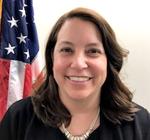South Middleton School District is exploring ways to encourage greater participation in a user fee meant to offset the cost of parts and repairs to laptop computers and other devices issued to students.
Only 24% of district families pay the optional fee of $20 per student per year, said Brian Ronan, district director of technology and technology support.
The current level of buy-in by families is not enough to keep pace with the costs, Ronan said. “It leaves us hurting to find the money to ensure that all the equipment is in good repair and available to all the students. The $20 fee doesn’t even cover a lost charger at this point.”
The school board’s technology committee discussed the fee during its March 28 meeting. There was talk early on of making the fee required for all students at all grade levels.

At first, committee chairman Eric Berry objected to that approach, saying that if the district wants to make the use of devices mandatory, it should cover all the repair costs.
People are also reading…
But that was before he knew the actual dollar amount. On hearing that the fee was $20, Berry said, “That makes it easier to swallow. Most people can afford that.”
But board member Shannon Snyder said the $20 fee may be a hardship for some families. One goal of providing a computer or device to each student is to remove any barriers to access so that every child has the opportunity to learn the technology skills necessary to compete in college or the workplace, she said.
Ronan said the district could look at providing a waiver to families based on their eligibility for free or reduced price meals.

Snyder that as the parent of a Boiling Springs High School student, she wrote out a check that was held by the district, almost like a deposit, and voided out at the end of the school year when her son turned in his laptop computer without any damages.
While receptive to that idea, Ronan said he wants to talk to Tina Darchicourt, director of business and operations, to determine if the district has the ability to hold payments on upwards of 2,100 students for as long as nine months.
“It may be a logistical nightmare to have all that money in limbo,” Berry said. “It’s worth looking into.”
Berry asked Ronan what would happen if greater participation in the fee brings in more money than is needed to cover the annual costs of parts and repairs. “Where would that surplus go?” Berry asked.
Ronan said the surplus could be rolled over into the next fiscal year to cover repair costs or set aside to purchase classroom technology.
The district would need fiscal data from at least two years to determine if greater participation in the fee would yield a surplus, Ronan said.
Berry suggested the district could reduce the fee from $20 to $15 depending on how well families respond to the need for a greater buy-in. “It’s about everybody pitching in a little bit,” Berry said.

Ronan suggested having families pay the fee upfront for the first year only to carry it over into the following year if no repairs are needed. “It’s a good faith credit,” Ronan said. “It might make it easier for the business office to handle than holding checks.”
The idea of rolling the fee over into the following year may motivate parents to make sure their child takes care of their laptop computer or device, Berry said.
Ronan said that approach could teach students the reality of digital citizenship and what happens when they are employed. “When you get a job, you can’t destroy the laptop that is issued to you,” Ronan said.
Since the start of the current school year, there have been several cases where students have gone through multiple devices — the one that was issued to them and loaners given out during repairs, Ronan said. “One student has gone through four devices.”
Another option that is being explored is to have a different per capita rate depending on how many students are in a family, Ronan said.
Joseph Cress is a reporter for The Sentinel covering education and history. You can reach him at [email protected] or by calling 717-218-0022.





More Stories
English Language Teaching and Learning: Creating a “Smart” Classroom
Science and Technology, IT And Space
Universal Design and Assistive Technology